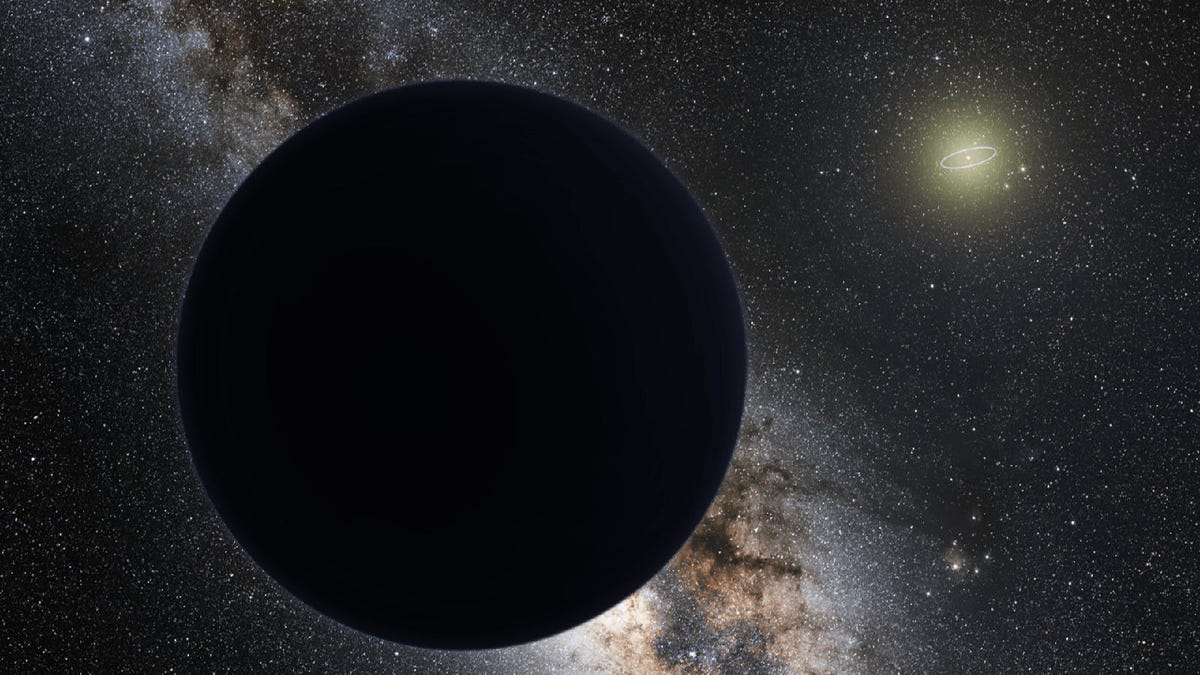'Planet X' real? Maybe, but the threat isn't
The news of an unseen world lurking somewhere in our solar system may be real, and scientists hope to spot it soon, putting to rest rumors it could end us all.

This mysterious neighbor lives at the edge of town, way too far to mess up our lawn, cosmically speaking.
Scientists are searching for an unseen planet hiding somewhere in our solar system, but not one set to seemingly appear from nowhere to collide or nearly collide with Earth, ushering in an age of apocalypse.
Over the past several weeks, you may have come across one of those wacky predictions that a planet called "Nibiru" or "Planet X" is lurking "behind the sun" or somewhere else out of view in our solar system but threatening an imminent existential catastrophe nonetheless.
As with much of the fake news and online rumor-mongering that now spreads far and wide in a flash over social media, there is a grain of truth to the story that is then twisted, exaggerated, taken out of context or conflated with others.
The kernel of reality in the 2017 version of the Nibiru cataclysm prophecy, which represents at least the third time the planet has failed to show itself as predicted, is that astronomers increasingly see evidence of an invisible ninth planet in our solar system.
"There are now five different lines of observational evidence pointing to the existence of Planet Nine," CalTech planetary astrophysicist Konstantin Batygin, said Wednesday in a release.
Batygin and his mentor-turned-colleague, Caltech professor Mike Brown, originally hoped to debunk the idea of a hidden planet a few years back. But they have instead discovered more indications that there is something out there, stretching the orbits of distant objects and perhaps even tilting the entire solar system to one side.
"If you were to remove this explanation and imagine Planet Nine does not exist, then you generate more problems than you solve. All of a sudden, you have five different puzzles, and you must come up with five different theories to explain them," Batygin explains.
What Brown and Batygin haven't found, however, is evidence that a ninth planet is anywhere near or will come remotely close to Earth anytime soon. And its aforementioned influence on the entire solar system takes place subtly and over a very long timescale
"Over long periods of time, Planet Nine will make the entire solar-system plane precess or wobble, just like a top on a table," Batygin said.
A world that is unseen, but has a gravitational impact that can be detected through its interaction with other bodies in our outer solar system, is unsurprisingly believed to be significantly massive and very, very far away. Brown and Batygin have estimated the mysterious cosmic neighbor to be perhaps 10 times the mass of Earth and 20 times farther from the sun than Neptune.
So now Batygin and Brown are trying to locate the hidden planet they once tried to disprove using the Subaru Telescope at Mauna Kea Observatory in Hawaii. They call it the "best tool" for finding distant, dim objects hiding in the broad, black sky.
As for spotting Nibiru or Planet X on a collision course with Earth, you could do that by looking up at the sky with your naked eye, where it would easily be visible. Don't see it? That's because it doesn't exist and also, it hasn't been hiding behind the sun for years, because that idea goes against simple geometry.
So carry on and don't worry about unseen colliding planets. Asteroids, though, are another matter...
Technically Literate: Original works of short fiction with unique perspectives on tech, exclusively on CNET.
Crowd Control: A crowdsourced science fiction novel written by CNET readers.

